I’m delighted to leave Kathmandu with it’s dusty air, dirt, and intolerable traffic.
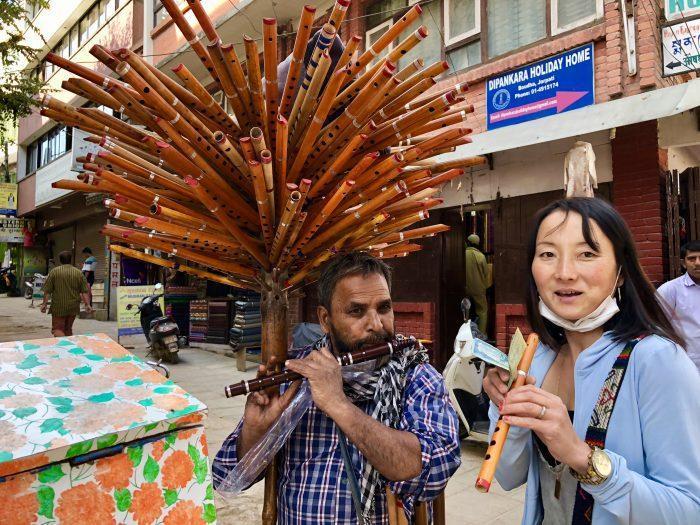
My sister Ghalem bought a flute for her cousin Dendrup from this street vendor.
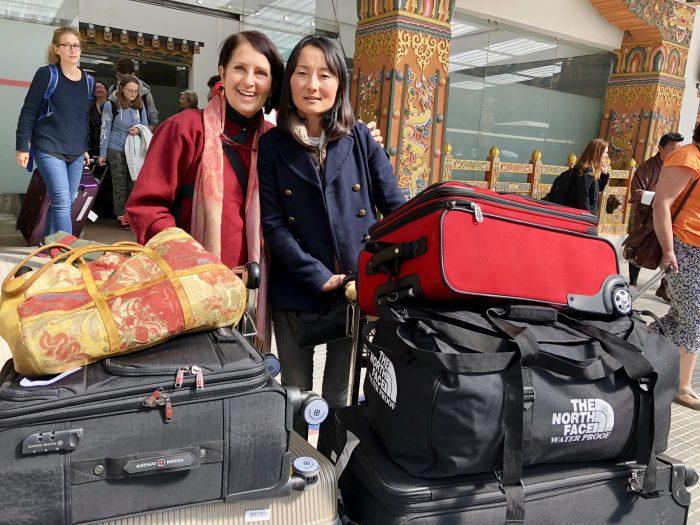
Ghalem and I arrive in Paro with 60 kilos and 6 suitcases of winter clothes and gifts for family.
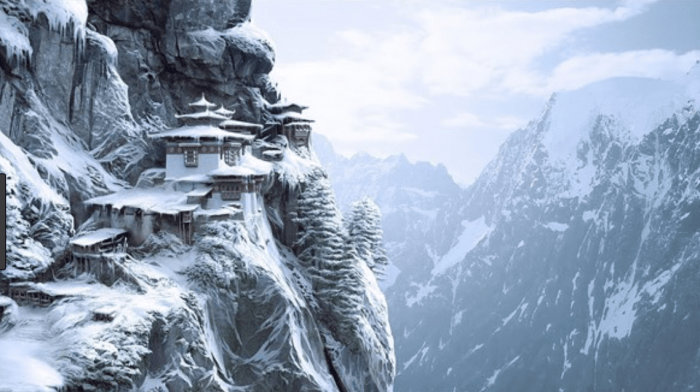
I find out I’m a spoiled American. Bhutan is seriously COLD in the winter. And guess what? There’s no central heat in the homes. Some people use a space heater. Most homes have hot water heaters. We’ll be staying with Ghalem in Thimphu and she has neither. It’s pretty rough for me. I don’t wash up much. At night I use a hot water bottle to heat the bed. I finally begged a friend to take me to his house for a hot shower. Yep, Im a spoiled American. They humor me very kindly.
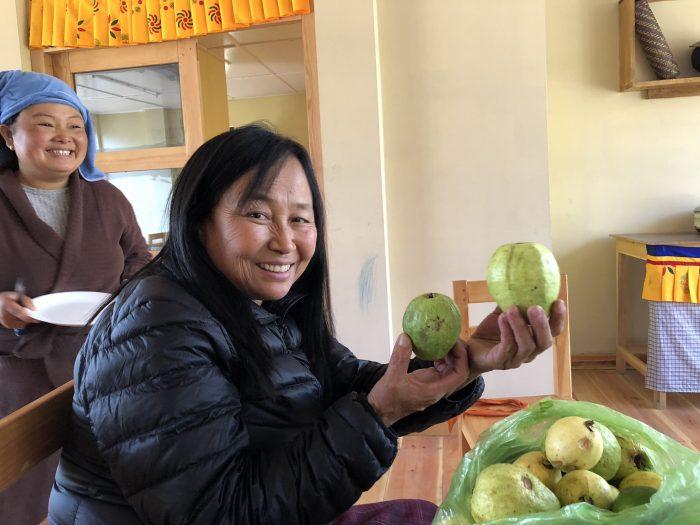
We stopped in Paro at my sister Tuji Zam’s hotel for lunch. It’s called the 4 Seasons Hotel. That’s Tuji Zam on the left. My other sister Tsering Om picked us up at the airport, and she’s showing off the guavas sent from family farm in Punakha.
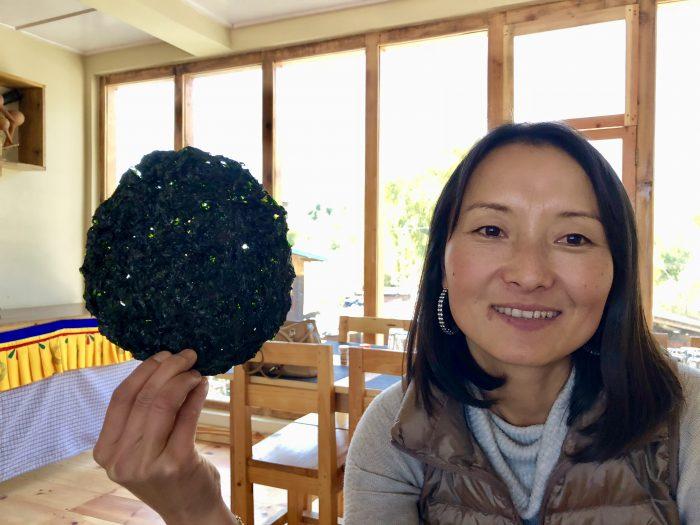
Ghalem shows seaweed sent from the family farm. Her mother gathers it from the river, dries it, and uses it all winter in soups.
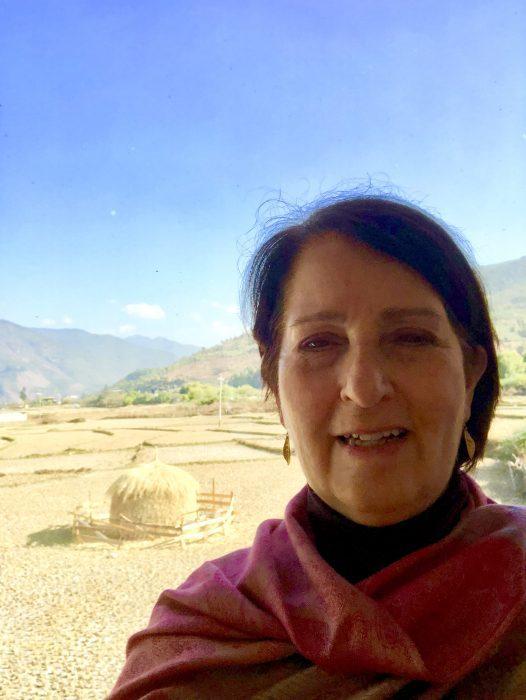
My sister Tuji Zam in Paro has a hotel and a rice paddy. Her rice has been harvested into a pile behind me to protect it from moisture. Soon it will be threshed and hulled.
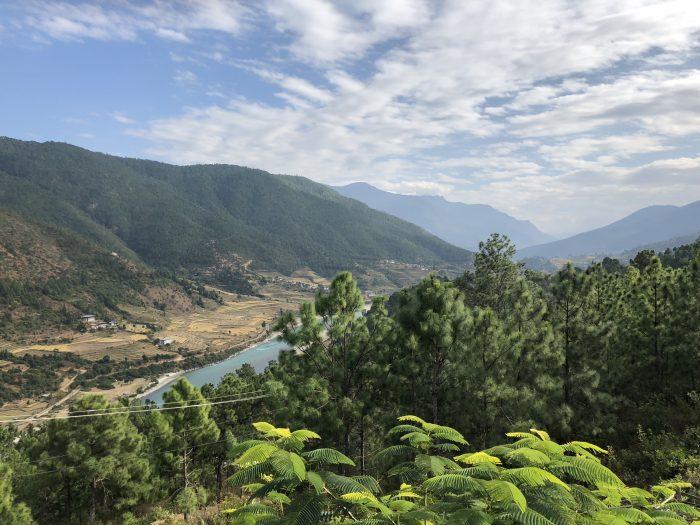
We have to go to court in Punakha, 2 hours east of Thimphu. This is Lama’s home, and we have to have a final interview with a judge to finalize our marriage certificate. The drive to Punakha is incredibly beautiful.
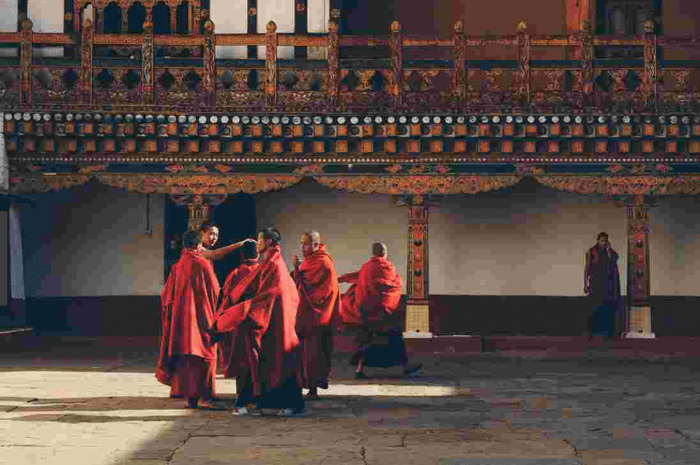
The Dzong (means monastery or fortress) in Punakha is very old, and one of the most beautiful in Bhutan. However the monks that live there have no central heating. Their robes are tighly woven yak wool, which is a bit scratchy, but protects from the wind.
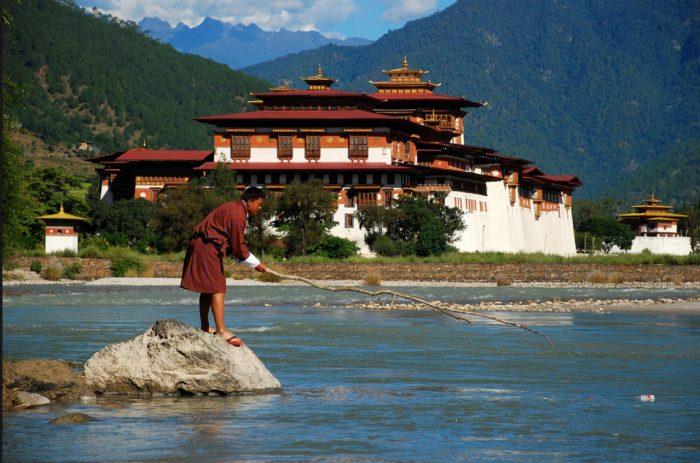
The Punakha Dzong is incredibly beautiful, and was the site of the royal wedding of the 5th King in 2011. It is alongside a lovely river filled with happy water.
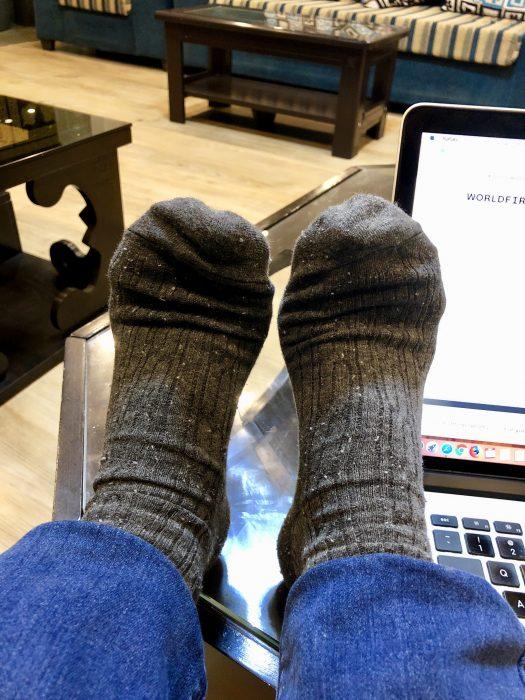
The night before our wedding confirmation, I suddenly look at the calendar and discover that tomorrow is my birthday. OMG I told the Lama, we’re getting married on my birthday. How auspicious is that? he says. The next morning he says “Happy birthday, here’s a new pair of socks. Your old ones were full of holes so I threw them away.” He put them on me to make sure the fit properly. No one has ever done that for me. It feels amazing. My best birthday yet!

We drive to the courthouse, accompanied by two of Lama’s school friends as witnesses for both of us. We’re wearing the formal Bhutanese dress of kira for women and Gho for men.
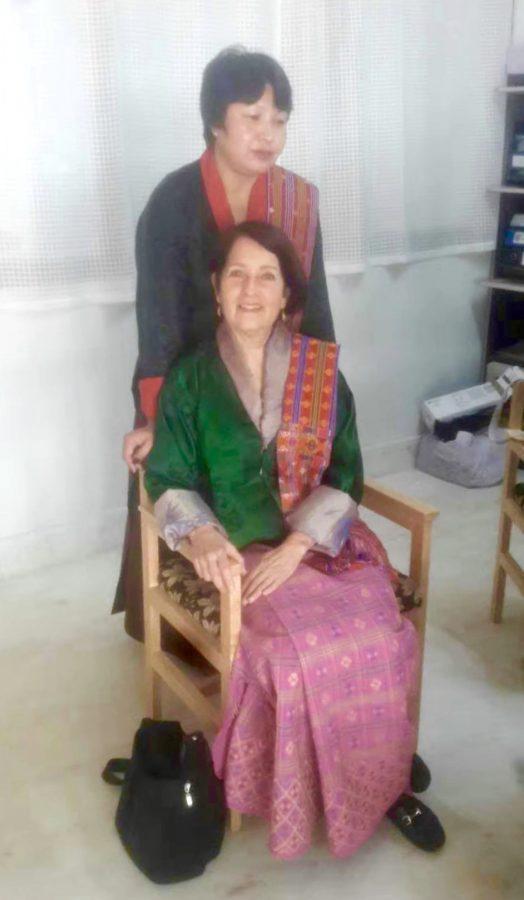
My witness waits with me while Lama takes care of interminable paperwork required for a foreign marriage certificate. Finally we entered the chambers, I speak in Dzonkha, the judge quizzes me, and he approved our marriage. I wanted to take a photo in the chambers but it is not allowed.
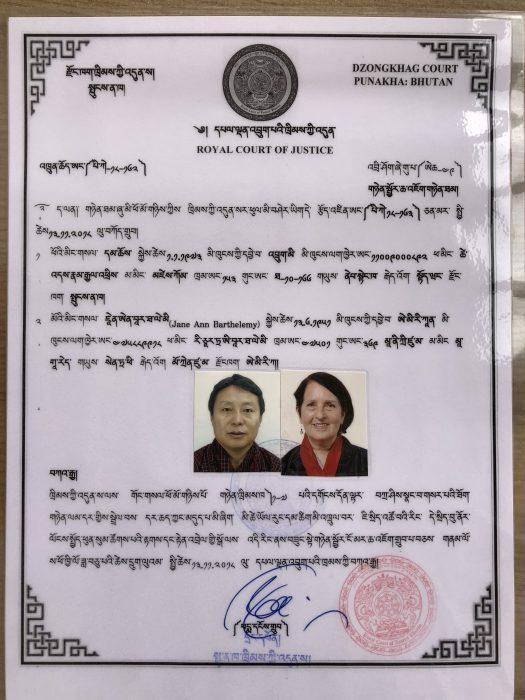
This is our final marriage certificate. It is official in Bhutan and every country in the world. Of course I can’t read the Dzongkha. Soon we’ll notarize it and translate it into English.
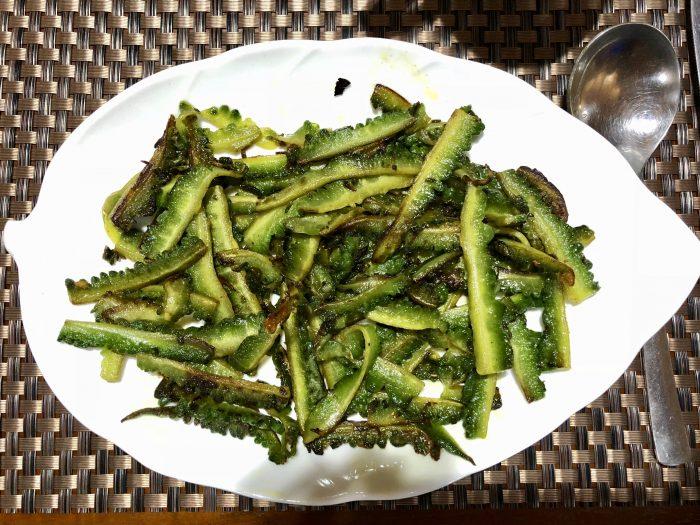
I love vegetables. This is called bitter gourd, also called bitter melon. Whenever I find it on the menu, it’s a favorite.
How do the Bhutanese Use Names?
In Bhutan when a baby is born, a Rimpoche or Lama will give them prayers, blessings, and a name. Thus a person’s name has important Buddhist spiritual significance. For example, the name Sangay means the Buddha. The name Pema refers to a lotus and to the great saint Pemasimbhava who emerged from a lotus flower. Tshering means long life, and Damchey means Dharma. A name is very auspicious and reminds a person of their right path.
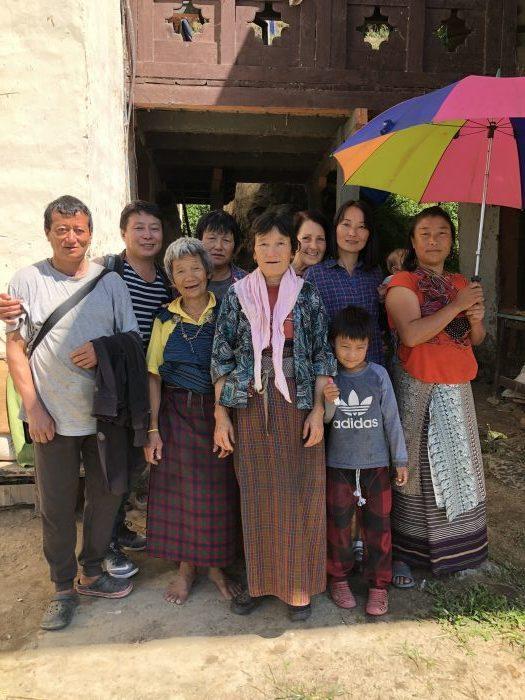
This is a small fraction of my Lama’s family. On the back left is Azha Rinzi (uncle Rinzi), Damchey (Dharma), Namgye Zam, me. and his cousin-sister Ghalem Wang. The front lady in the pink scarf is his auntie-mother Sangay Pida.
No Family Names
Bhutanese do not use family names. So they have no surname, and no indentification of their family in the name. Only the royal family line of Bhutan use a last name of Wangchuck. A woman’s name does not change when she is married.
Two Names, Gender Neutral, No surname
Most Bhutanese people have two names. Such as Tsering Om, meaning long life and the primordial sound. Tshultrim Lhamo means the Goddess of Morality, Most names can be used as a first or second name. A few people have only one name, such as my Lama – his name is Damchey. That’s what is printed on his passport. Just one name creates a slight problem when traveling. If a second name is required he often just doubles his name to Damchey Damchey.
Names are generally gender neutral, so boys and girls can have the same name. Some names are incredibly common, so it is challenging to remember. For example I know 10 people named Namgyal (named after Rimpoche Zhabdrung Ngawang Namgyal, patron saint of Bhutan), and 8 people named Sangay (Buddha). I know 8 Pema’s (Lotus), 6 Ugyen’s (Pemasambhava), and 3 Dorji’s (Indestructability). I try to call people by both their names so we aren’t confused.
Names and titles can be long
Some Bhutanese have more than two names. Especially religious figures may use a string of names to indicate importance. Just try to pronounce the name of the great 10th Karmapa: Palden Jigten Sumgi Drenpa Kuzhi Lhendup Choying Kuntu Chabpai Thinley Tagpai Dorji Gyurwa Medpa Yizhingyi Nyinpo Gyepa Damedpa Ngonpar Thowai Pal. Whew!
A progressive system, No class, caste or patriarchy.
In Bhutan, your name indicates your life direction and your worth as a human being, rather than being linked to a family, profession, class or caste. It frees societies from the a patriarchal system in which a principal male member symbolically controls other members through the surname.
In Europe, surnames became popular in Rome
Surnames died out during the Middle Ages and then re-emerged in the 1400’s, indicating a man’s occupation or village. This is the origin of our modern surnames like Smith or Schmidt for blacksmith, Müller, Fisher, Shepherd, etc. In China family surnames have been the norm for several thousand years.
Thanks for checking in.
Next week we’ll be going back to cold Thimphu to the Immigration Department to apply for permission for me to stay in Bhutan, and also look for a car. Now that we have the marriage certificate, we can apply for Lama’s US Visa. One step at a time.


